
From the good people at Hermès (who designed the above image and sent it) and from Perfume Shrine may the New Year be splendid for all of you!!
We will be back with surprises, the results of the poll and a lucky draw very soon. Stay tuned!
.jpg)
.jpg)
Considered by many perfume lovers to be the ultimate leather, Scandal was admired by no lesser an authority than the late, great Edmond Roudnitska. It is one of the few classics he mentions in his book Le Parfum(Presses Universitaires de France, 1980), firstly as the prototype of a “fruity-aldehydic-leather” family and secondly, as a prime example of compositions that evoke rather than represent a note (which he opposes to non-representational perfumes such as N°5, Arpège, Mitsouko or Femme).
Top: neroli, bergamot, mandarine, clary sage.
Heart: jüchten (cuir de Russie), iris, rose, ylang
Base: incense, civet, oakmoss, vanilla, vetiver, benzoin.
“Leather and tobacco”, he observes, “are already transpositions of natural elements since they undergo painstaking preparations which alter the initial odour.”
.bmp)




“Just a castaway, an island lost at sea, oh
Another lonely day, with no one here but me, oh
More loneliness than any man could bear
Rescue me before I fall into despair, oh”
“Walked out this morning, don’t believe what I saw
Hundred billion bottles washed up on the shore
Seems I’m not alone at being alone
Hundred billion castaways, looking for a home”.


.jpg) And because we couldn't let this go without a perfume reference, please take a look at the Christmas "cookies" we discovered someone has been baking! Embossed with a Chanel logo no less!! Now, this is what I call The Perfume Spirit. May that one light your way as well...
And because we couldn't let this go without a perfume reference, please take a look at the Christmas "cookies" we discovered someone has been baking! Embossed with a Chanel logo no less!! Now, this is what I call The Perfume Spirit. May that one light your way as well...

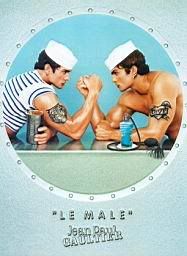
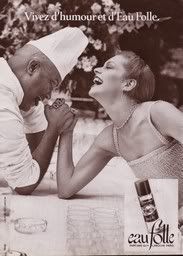


"The hospital stood on a hill, and a gentle breeze entering through the windows, always flung wider open, brought into the bare room the softness of the sky, the languor of the earth, the betwitching breath of Eastern waters. There were perfumes in it, suggestions of infinite repose, the gift of endless dreams".

.jpg) Whenever I think of Cuir de Russie by Chanel I think of a particular place and a woman I once saw. She is of Slavic features, quite old and she must have been beautiful at her prime. Now the fallen features speak of a splendour gone by, an existence that was once luxuriously pampered now reduced to wandering the busy, buzzing city sitting at the old derelict café that was Zonar’s up till some years ago. Situated at the city centre, amidst the crowded shopping district and face to face with an uber-luxe jewel shop (which in itself had been a traditional, picturesque ouzeri in a previous incarnation), Zonar’s had been for almost half a century the Mecca meeting point of local and visiting intelligentia.
Whenever I think of Cuir de Russie by Chanel I think of a particular place and a woman I once saw. She is of Slavic features, quite old and she must have been beautiful at her prime. Now the fallen features speak of a splendour gone by, an existence that was once luxuriously pampered now reduced to wandering the busy, buzzing city sitting at the old derelict café that was Zonar’s up till some years ago. Situated at the city centre, amidst the crowded shopping district and face to face with an uber-luxe jewel shop (which in itself had been a traditional, picturesque ouzeri in a previous incarnation), Zonar’s had been for almost half a century the Mecca meeting point of local and visiting intelligentia..jpg) And then like old civilizations, it withered and almost died…Abandoned, frequented only by the decadent and the nostalgically traditionalists. She was there, all right: mink fur jacket on her back, but almost tattered and yellowing at the edges. Antique gold bracelets that must have been family heirlooms from a Bosporus clan. Her hair coiffed in an old fashioned style that must have gone out of fashion about 30 years ago, her eye pensive and introspective. Her black croc bag, good quality, but showing years’ long wear. To paraphrase Poe, a "woman of the crowd"…
And then like old civilizations, it withered and almost died…Abandoned, frequented only by the decadent and the nostalgically traditionalists. She was there, all right: mink fur jacket on her back, but almost tattered and yellowing at the edges. Antique gold bracelets that must have been family heirlooms from a Bosporus clan. Her hair coiffed in an old fashioned style that must have gone out of fashion about 30 years ago, her eye pensive and introspective. Her black croc bag, good quality, but showing years’ long wear. To paraphrase Poe, a "woman of the crowd"…“sumptuous leather, light and balsamic, forgoing any sugary compromise, Cuir de Russie regains its place at the top of this category, right next to the rather more jovial Tabac Blond. [...]Cuir de Russie is a striking hologram of luxury bygone: its scent like running the hand over the pearl grey banquette of an Isotta Frashini while forests of birch silently pass by”.
.jpg)
“There's something about it that makes me emotional - it reminds me of Paris and of times gone by when people had an elegant approach to life. I feel I'm wearing a wise grand dame around my neck.”
“nothing is more foreign to our tradition than those violent bursts, those frantic and intense dances, this instinctive frankness, this disproportionate imagination. The discordance is so brutal that one would be astonished by the tenacious favour that those people over there hold on us. The simple truth is that Russians fascinate us because they distrurb us”.
.jpg) Legendary nose Ernest Beaux, guided by Chanel’s desires to dare, made women indulge in what is essentially a men’s scent formula, garlanding it though with sparkly, dry aldehydes and the eternal feminine flowers: jasmine (an abundance of it!), rose and ylang ylang; redolent of No.5’s own heart, giving a warm, honeyed aspect that contrasts with an icy element that enters and exits the scene like an aloof, declassé aristocrat ~in perfect accordance to what was previously revealed as being the idea behind it: the leather pouches for jewels.
Legendary nose Ernest Beaux, guided by Chanel’s desires to dare, made women indulge in what is essentially a men’s scent formula, garlanding it though with sparkly, dry aldehydes and the eternal feminine flowers: jasmine (an abundance of it!), rose and ylang ylang; redolent of No.5’s own heart, giving a warm, honeyed aspect that contrasts with an icy element that enters and exits the scene like an aloof, declassé aristocrat ~in perfect accordance to what was previously revealed as being the idea behind it: the leather pouches for jewels.
 |
| Dior Poison "memento mori" ad, "all is vanity" |
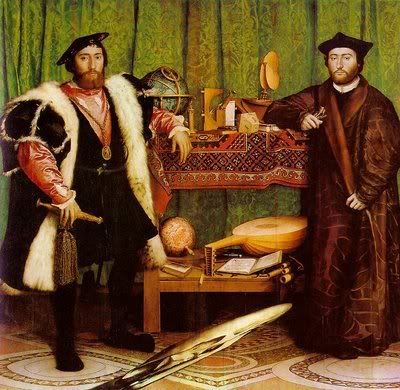

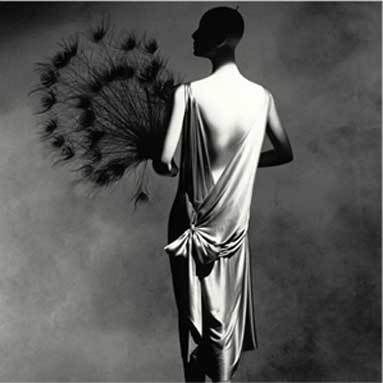
.jpg) Like its younger sister Habanita (1921), Tabac Blond’s rich, golden-honeyed, slightly louche sillage speaks of late, smoke-laden nights at the Bal Nègre in the arms of Cuban aristocrats or déclassé Russian émigrés, rather than exhilarating rides in fast cars driven by the new Eves…
Like its younger sister Habanita (1921), Tabac Blond’s rich, golden-honeyed, slightly louche sillage speaks of late, smoke-laden nights at the Bal Nègre in the arms of Cuban aristocrats or déclassé Russian émigrés, rather than exhilarating rides in fast cars driven by the new Eves…
“She is a strong woman. Excuse – strength is not the word I am after. Women, pretty women at least, are never ‘strong”. I need a word that expresses energy, the quality that makes a man who speaks of ‘frail Eve’ – referring to the female sex – look like a fool!
Her neck is arched and tense. Tense also her features, her whole carriage indeed! Her demeanour is that of a duellist awaiting the attack!
Attack from whom!
From you, sir, and from me… from man, in general.”



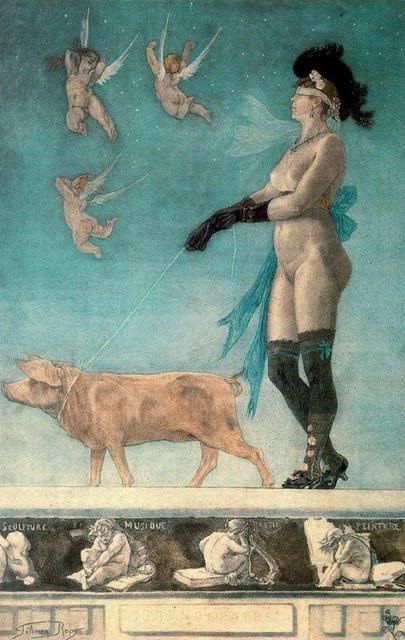
“The glove (…) had retained a strong odour, this distinctive musky odour which the girl’s favourite perfume, heliotrope, sweetened with a touch of vanilla; (…) violently aroused by this blend of flower and flesh, he was overcome, with the glove on his mouth, drinking in the voluptuous pleasure of his memories. (….) When he was alone, he would pick up the glove, breathe it in, kiss it, thinking he still held her in his arms, his mouth on the nape of her neck.”
“I did this in four days in a small blue satin room, in an overheated apartment, full of smells, where opoponax and cyclamen gave me a fever salutary for production and even reproduction.”Courtesy Agoravox.fr

“Created at the end of the nineteenth century, the original version of this exceptional cologne has been adapted to today’s market. {re-orchestration in 2003 according to Osmoz}. Very “landed gentry” its fragrance is inspired from the leather smell of Cossack riding boots protected against the wet with silver birch bark. The entrancing and impossibly elegant smell of leather peppered with the tangy notes of mandarin and bergamot orange to leave skin feeling totally refreshed. Next come the wooden and spicy notes before these in turn give way to the aroma of honey. A fragrance that surrenders itself discreetly, unveiling its splendour all in good time and presented in a highly structural bottle inspired by the Russian constructivist period. Convivial, refined and yet never ostentatious. Absolute luxury”.Worthy of mention however that the unisex Piver’s Cuir de Russie is listed as a 1939 scent on Basenotes.
“Peau d'Espagne may be mentioned as a highly complex and luxurious perfume, often the favorite scent of sensuous persons, which really owes a large part of its potency to the presence of the crude animal sexual odors of musk and civet. It consists of wash-leather steeped in ottos of neroli, rose, santal, lavender, verbena, bergamot, cloves, and cinnamon, subsequently smeared with civet and musk. It is said by some, probably with a certain degree of truth, that Peau d'Espagne is of all perfumes that which most nearly approaches the odor of a woman's skin; whether it also suggests the odor of leather is not so clear”.For some it is this ancestral echo of the sexual stimulus of skin odour that accounts for its success. And for others it is a scent of profound reminiscence. One of the most touching ~and evocative of a lost memento~ tales comes from Peter Altenberg, the Viennese coffeehouse bohemian, according to whom
"There are three idealists: God, mothers and poets! They don’t seek the ideal in completed things—they find it in the incomplete."
“As a child I found in a drawer in my beloved, wonderfully beautiful mother’s writing table, which was made of mahogany and cut glass, an empty little bottle that still retained the strong fragrance of a certain perfume that was unknown to me. I often used to sneak in and sniff it. I associated this perfume with every love, tenderness, friendship, longing and sadness there is. But everything related to my mother.By the late 18th century, when the vogue for strong animalic scents which had monopolized the tastes of the rich and powerful for over two centuries had subsided, Peau d’Espagne remained an exception to the rule of the floral nosegays and the light handkerchief waters used. And by 1910, Peau d’Espagne had evolved into a fragrance to be donned on one’s person, rather than merely as the aroma of little bits of leather for scenting stationery and clothing. So cachets and gloves get a smell not only of leather itself, but also of spices and flowers added. The recipe was enhanced by the addition of vanilla, tonka beans, styrax, geranium and cedarwood. A powerhouse! Many followed the recipe from the discontinued Roger et Gallet (1895)to Santa Maria Novella (1901).
Later on, fate overtook us like an unexpected horde of Huns and rained heavy blows down on us. And one day I dragged from perfumery to perfumery, hoping by means of tiny sample vials of the perfume from the writing table of my beloved deceased mother to discover its name. And at long last I did: Peau d’Espagne, Pinaud, Paris. […]
Later on, many young women on childish-sweet whims used to send me their favourite perfumes and thanked me warmly for the prescription I discovered of rubbing every perfume directly onto the naked skin of the entire body right after a bath so that it would work like a true personal skin cleansing! But all these perfumes were like the fragrances of lovely but poisonous exotic flowers. Only Essence Peau d’Espagne, Pinaud, Paris, brought me melancholic joys although my mother was no longer alive and could no longer pardon my sins”.





